Do you want to experience the beauty of a night sky full of stars? If you’re in Los Angeles, you’re certainly in luck! I will show you how to make the most of L.A.’s unique starry nights and explore the Milky Way.
But wait. You’re probably wondering, “Can you see the Milky Way from Los Angeles?”
The quick answer is yes! You can see the Milky Way from Los Angeles. However, it takes work.
In this article, you get
An understanding of why seeing the Milky Way is challenging from Los Angeles
Tips on when are the best times to see the Milky Way
A schedule for the Milky Way Season in Los Angeles
Three recommended locations for seeing the Milky Way
A look back at the 1994 earthquake that allowed everyone in L.A. to see the Milky Way
By the end of this article, you’ll have all the info you need to see the Milky Way from Los Angeles and more!
Let’s dive right in.
Recommended For You
CAN YOU SEE THE MILKY WAY FROM LOS ANGELES?
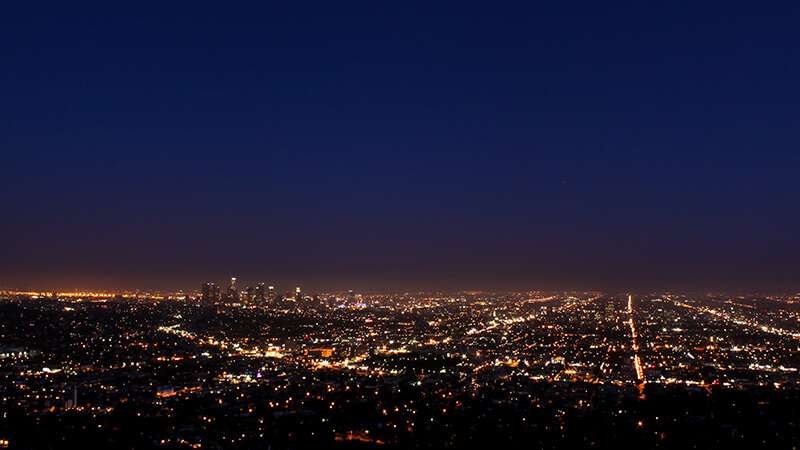
If you’re in Los Angeles, you may wonder if it’s possible to catch a glimpse of the Milky Way.
The answer is yes. However, the Milky Way core stars are not visible from L.A. due to light pollution.
You’ll need to travel to one of the darker locations to get an optimal view.
These locations are in the Santa Monica and San Gabriel Mountains, such as Mount Wilson Observatory or Saddleback Butte State Park.
Alternatively, you can still spot some stars from within Los Angeles by visiting Griffith Park Observatory. Do you know what is the brightest star in the sky in California?
FREE STARGAZING CHECKLIST
My 5-page Stargazing Checklist will enhance your astronomical observations.
Follow this free checklist to navigate the night sky with confidence, clarity, and a sense of preparedness for a rewarding stargazing experience.

I was living in Los Angeles during the 1994 6.7-magnitude earthquake. I recall stepping outside our house after the shaking had stopped. Seeing the Milky Way was an amazing experience during such a terrifying event.
I’ll speak more about this later in the article.
LIGHT POLLUTION IN LOS ANGELES

Light pollution is a significant issue in Los Angeles.
It’s virtually impossible to see the Milky Way within the city limits.
A Los Angeles light pollution map is the most popular and widely-used way to check where you can see the Milky Way.
For more info on Light Pollution in California, read my article Dark Sky Map California.
THE MILKY WAY CORE IS NOT VISIBLE FROM LOS ANGELES
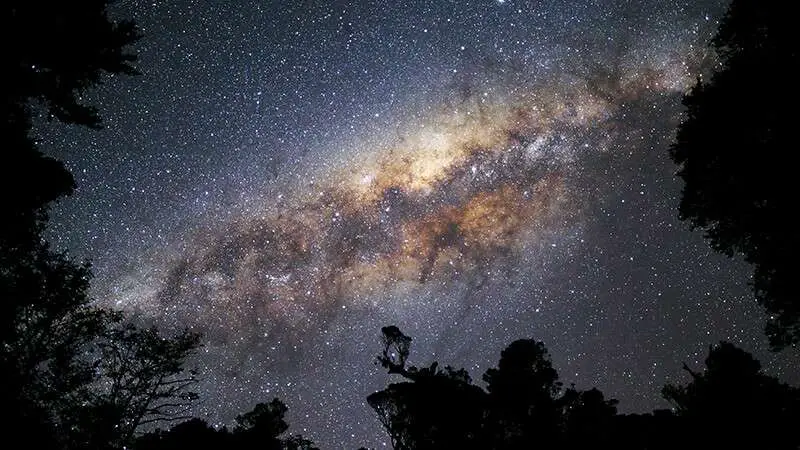
Unfortunately, if you’re in Los Angeles, you won’t be able to see the Milky Way core. That’s because of the light pollution that comes with being in a major urban center.
Even with no moon, there’s still too much light pollution to make the Milky Way core visible.
It would help to travel outside the city to enjoy the Milky Way’s beauty.
Check out my article on the best places for stargazing in California.
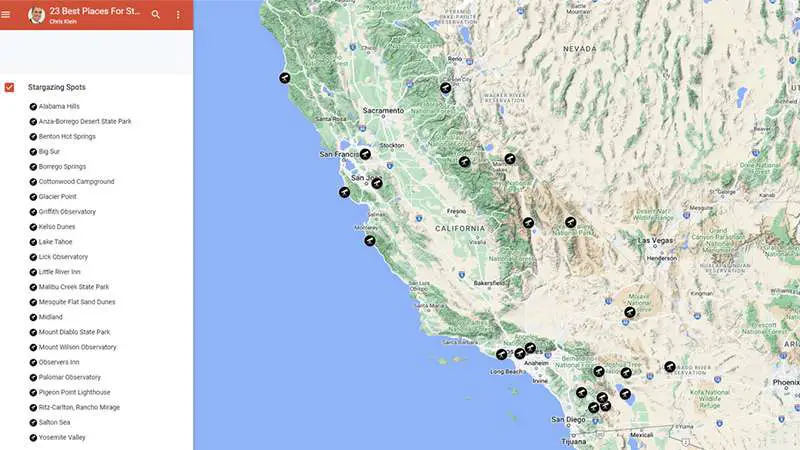
OPTIMAL VIEWING CONDITIONS FOR MILKY WAY CORE
To get the best view of the Milky Way Core in Los Angeles, you must go to a dark location with no lights, such as Mount Wilson Observatory or Saddleback Butte State Park.
For optimal viewing conditions, you will need a dark sky, preferably with no moon or a new/crescent moon.
Binoculars or a telescope will undoubtedly show more detail than your eyes alone. They are worth considering if you want a closer look at the Milky Way Core.
The best time for viewing the Milky Way Core is from late April to late July.
The galactic center is visible during this time in the southern half of the sky.
MILKY WAY SEASON: BEST TIME TO SEE THE MILKY WAY IN LOS ANGELES
The Milky Way is visible on any night, but the “core” is only visible during certain months.
In the Northern Hemisphere, it’s best to catch the Milky Way during the summer months from June to August. The optimal time to see it is on a moonless night when there’s no significant moonlight in the night sky.
So if you’re in L.A. looking to take in the Milky Way, plan your trip to coincide with a clear night from July to August.
UNDERSTANDING THE MILKY WAY VIEWING CYCLE
The Milky Way is visible in the night sky year-round. However, optimal viewing conditions for the Milky Way Core vary depending on the season.
The Milky Way Core is the brightest part. The core is the galactic center.
WHEN IS THE BEST TIME TO SEE THE MILKY WAY IN LOS ANGELES?
No matter where you are in the world, you can see the Milky Way all year. Of course, it’s best when the sky is clear, and there is minimal light pollution.
The best time to see the Milky Way in Los Angeles is from late February to late October. During this “Milky Way Season,” the galactic center is visible in the night sky, and it will be most spectacular when the moon is not out.
During the summer months (June – August), the Milky Way Core is at its best. As of June, it will rise well before midnight. From September to October, it is also visible, but not for many hours.
Light pollution is a factor. It’s essential to get away from the city lights for optimal viewing.
With a clear sky and no moonlight, you’ll have the perfect opportunity to take in the beauty of the Milky Way!
STARGAZING AROUND LOS ANGELES: MOUNT WILSON OBSERVATORY

If you’re looking for the best stargazing experience in Los Angeles, then Mount Wilson Observatory is the place to be!
This Observatory offers a truly dark sky, and its opening in 1935 made it the most visited stargazing location in the world.
Mount Wilson is ideal for viewing celestial objects because the inversion layer traps warm air and smog over Los Angeles.
LOCATION OF MOUNT WILSON OBSERVATORY
The Mount Wilson Observatory is about 10 miles northeast of Pasadena. The Observatory sits at the edge of the vast carpet of artificial lights known as the Los Angeles Basin.
You can look deep into space through their 60-inch telescope. The Observatory is open daily.
CATCHING THE SHINING STARS AT GRIFFITH PARK OBSERVATORY
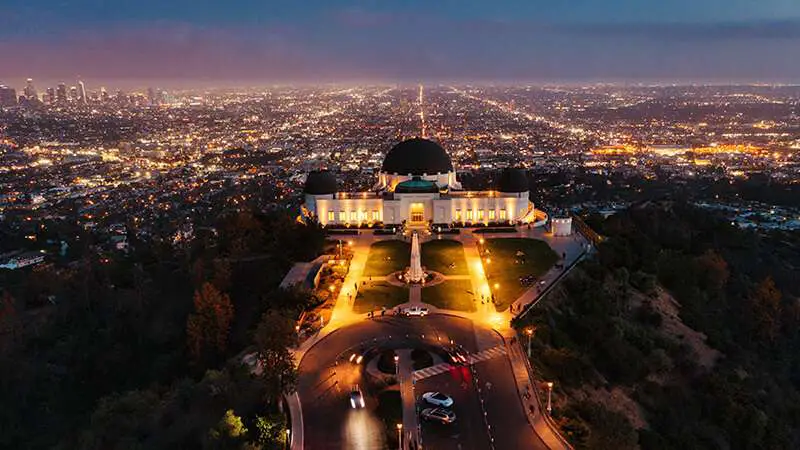
The Griffith Park Observatory is on the southern slope of Mount Hollywood.
It opened its doors in 1935 and has captivated visitors ever since. The Observatory offers an unobstructed view of the night sky.
The museum is full of exciting exhibits. There is also a planetarium where you can learn more about astronomy and the stars.
So if you’re looking for an unforgettable evening under the stars, look no further than Griffith Park Observatory.
HOW TO GET AN UNOBSTRUCTED VIEW OF THE SKY FROM GRIFFITH PARK OBSERVATORY
You can drive directly through Griffith Park Observatory and up to the parking area to get to Griffith Park Observatory. Once there, you can observe the stars through free public telescopes or on your own.
A DARK SKY AT SADDLEBACK BUTTE STATE PARK
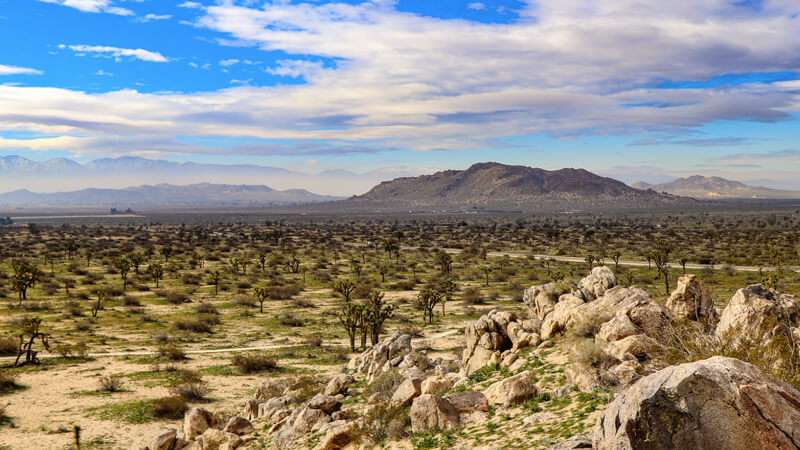
If you’re looking for an even darker sky, you can head to Saddleback Butte State Park in Lancaster, California.
With its 83% darkness rating, this park is a great place to observe the Milky Way and its stars. You can even take in the majestic Milky Way arching over the park.
As I mentioned above, the best time to go is during the Milky Way season, when the core of the Milky Way is visible.
LOCATION OF SADDLEBACK BUTTE STATE PARK
Saddleback Butte State Park is on the southern edge of the Mojave Desert and offers visitors a stunning night sky view.
Its elevation of 3,600 feet towers thousands of feet above the broad desert floor, making it the perfect spot to catch a glimpse of the Milky Way.
This park is a great place to visit if you’re looking for a dark-sky experience!
THE 1994 6.7-MAGNITUDE EARTHQUAKE THAT RUMBLED THROUGH LA
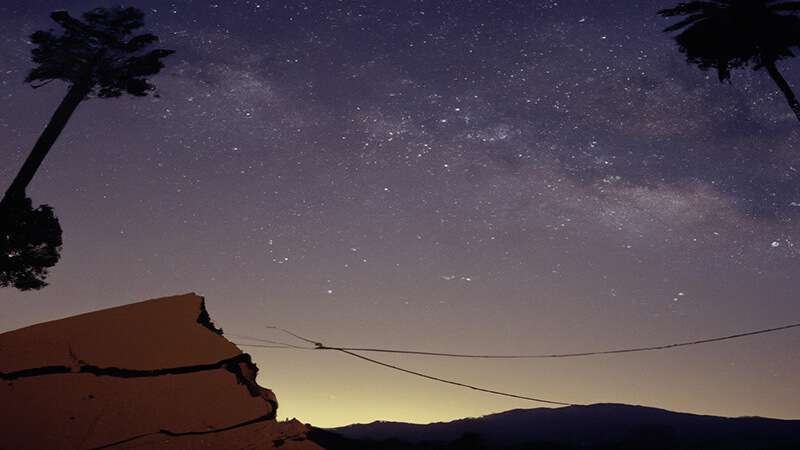
On January 17, 1994, at 4:30 a.m., the Los Angeles area was rocked by a 6.7-magnitude earthquake.
I was there!
The shaking woke everyone, who discovered the power had gone out citywide. Although the earthquake caused significant damage and disruption, it also served as a reminder of the fragility of the natural environment. It was a stark reminder of how quickly things can change and how important it is to be prepared for any situation.
The earthquake resulted in many people seeing the Milky Way for the first time.
I remember stepping outside when it felt safe to do so and being amazed at how dark the sky was.
Because all the power was out, and we didn’t know if the shaking would start again, we decided to sit outside and wait for the sun to rise.
During this time, we enjoyed looking up at the Milky Way.
We heard reports that people called 911 to report the “strange clouds” hovering overhead. It turned out they were seeing the Milky Way for the first time!
Bonus
I recently published an article about the Templin Highway Stargazing Area, which is just north of Los Angeles. It’s a class 4 Bortle Scale area. Be sure to read the article to learn about this unique spot so close to L.A.
FREQUENTLY ASKED QUESTIONS
CAN WE SEE THE MILKY WAY WITH THE NAKED EYE?
Yes, you can see the Milky Way with the naked eye, but it can be challenging to see in areas with heavy light pollution. Visible as a hazy band of light in the night sky, the Milky Way is quite striking on a clear night. But in areas with heavy light pollution, glare from street lights and other artificial light sources make it difficult. It’s best to find a location with little light pollution, such as a rural area or a national park, to see the Milky Way more clearly.
WHERE CAN I SEE THE MILKY WAY NEAR LOS ANGELES?
To see the Milky Way in Los Angeles, you must find a location with low light pollution. Joshua Tree National Park and Anza Borrego Desert State Park are two recommended places near Los Angeles. These two sites are 2-3 hours away from Los Angeles and are great places to go stargazing.
Another excellent location is Julian, California. Read my article about Julian Stargazing, where you’ll find helpful info about the annual Starfest.
SUMMARY
It is possible to see the Milky Way from Los Angeles, but it can be difficult due to the light pollution in the city.
The best time to view the Milky Way would be during the new moon phase and in areas with little light pollution.
I recommended you get outside of Los Angeles to increase visibility.
Mount Wilson Observatory is an ideal place to see the Milky Way in Los Angeles.
Additional articles from my USA Guides series you may enjoy about Stargazing California:
- Anza-Borrego stargazing
- Templin Highway Stargazing Area (north of Los Angeles)
- Stargazing Julian (home of the Starfest)
- Stargazing Orange County
- San Diego Star Gazing




